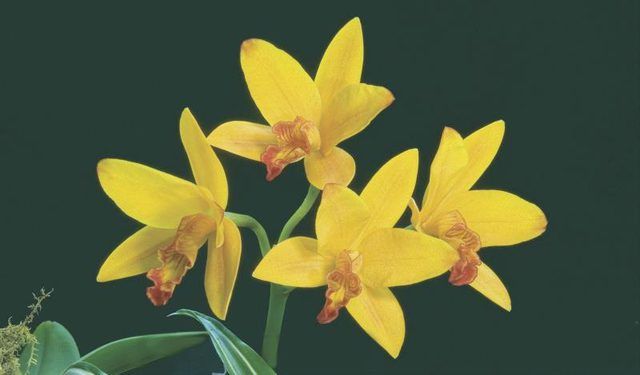Bulbs
Flower Basics
Flower Beds & Specialty Gardens
Flower Garden
Garden Furniture
Garden Gnomes
Garden Seeds
Garden Sheds
Garden Statues
Garden Tools & Supplies
Gardening Basics
Green & Organic
Groundcovers & Vines
Growing Annuals
Growing Basil
Growing Beans
Growing Berries
Growing Blueberries
Growing Cactus
Growing Corn
Growing Cotton
Growing Edibles
Growing Flowers
Growing Garlic
Growing Grapes
Growing Grass
Growing Herbs
Growing Jasmine
Growing Mint
Growing Mushrooms
Orchids
Growing Peanuts
Growing Perennials
Growing Plants
Growing Rosemary
Growing Roses
Growing Strawberries
Growing Sunflowers
Growing Thyme
Growing Tomatoes
Growing Tulips
Growing Vegetables
Herb Basics
Herb Garden
Indoor Growing
Landscaping Basics
Landscaping Patios
Landscaping Plants
Landscaping Shrubs
Landscaping Trees
Landscaping Walks & Pathways
Lawn Basics
Lawn Maintenance
Lawn Mowers
Lawn Ornaments
Lawn Planting
Lawn Tools
Outdoor Growing
Overall Landscape Planning
Pests, Weeds & Problems
Plant Basics
Rock Garden
Rose Garden
Shrubs
Soil
Specialty Gardens
Trees
Vegetable Garden
Yard Maintenance
How to Fertilize Orchids
How to Fertilize Orchids. Orchids that are actively growing or flowering need food to keep their health and energy. Orchids cover several genus and species, but for many tropical orchids grown in potting materials such as tree bark chips or moss, standard practice is fertilizing with a diluted formula once a week. This is usually enough to keep...

Orchids that are actively growing or flowering need food to keep their health and energy. Orchids cover several genus and species, but for many tropical orchids grown in potting materials such as tree bark chips or moss, standard practice is fertilizing with a diluted formula once a week. This is usually enough to keep your orchid healthy year-round. However, orchids don't always need feedings all year, and sometimes -- particularly during the bloom period -- they prefer something a little stronger than their typical watered-down blend.
GROWING SEASON: Choose a Balanced Fertilizer
Use a water-soluble, balanced fertilizer most of the year -- typically when your orchid is growing leaves and roots but not blooming or dormant. A balanced fertilizer will have an equal ratio of nitrogen, phosphate and potassium, such as 20-20-20. An exception is orchids grown in tree bark, because they need extra nitrogen; consider a 30-10-10 formula for them. In any case, ensure the fertilizer doesn't contain urea, because soil is necessary to convert urea's nitrogen into a form that plants can use -- and tropical orchids are not grown in soil.
Dilute the fertilizer to one-quarter strength -- meaning one part fertilizer to three parts water. Orchid roots are sensitive, so this prevents the fertilizer from burning them.
Water your orchid before fertilizing, to ensure roots are damp and won't burn when you apply the fertilizer.
Apply the diluted fertilizer to your orchid's potting materials approximately once a week. Don't fret if you miss a dose: Orchids are light eaters that can thrive even if you only fertilize them once or twice a month most of the year.
Water your orchid thoroughly once a week to flush out salts from the fertilizer. This prevents them from settling in the potting media and burning the roots.
PRE-BLOOM PERIOD: Use a Bloom Booster
Apply a bloom-booster formula to orchids to encourage flowering in the weeks leading up to the blooming season. This is typically in the autumn, after orchids have rested for several months from the last bloom period and are growing greenery and roots again.
A bloom-booster fertilizer has extra phosphorus; an example is a 10-30-20 blend. Choose a water-soluble blend, and apply at the rate recommended on the label. Though the exact levels vary, a typical example is approximately 1 teaspoon of fertilizer mixed into 1 gallon of water.
Applying a bloom-booster is optional, but it can be just the spark your orchid needs to produce an array of healthy blossoms.
BLOOM SEASON: Fertilize Monthly
Fertilize your orchid once a month at the rate recommended on the fertilizer label while the plant is in bloom. Ensure it's a balanced, water-soluble formula, and water every week to flush out the salts as usual.
REST PERIOD: Hold on the Fertilizer
Stop fertilizing your orchid during its rest period, no matter how tempting it is to try to make it bloom again. Orchids don't need food during this period. At this time, consider fertilizer just a salty snack that can burn your orchid's roots, which are not actively growing.
Keep in mind, though, that not all orchids have rest periods. For instance, the Phalaenopsis orchid (Phalaenopsis spp.) doesn't rest and appreciates fertilizer year-round.
You'll know your orchid has entered the rest period when it stops blooming, before sending out new shoots. True dormancy happens with some orchids when they shrivel and appear dead for several weeks or even months.